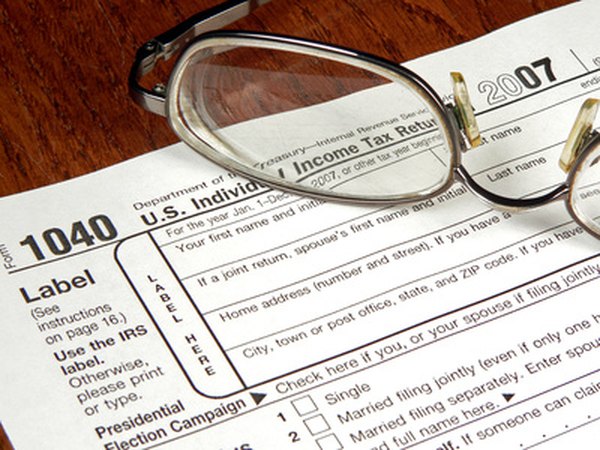How to Liquidate IRAs and Tax Implications
All IRA distributions, taxable or not, must be reported on your tax return.
tax forms image by Chad McDermott from Fotolia.com
Liquidating an IRA can be done at any time and for any reason. However, the tax implications of liquidating your IRA depends on whether you have a traditional or Roth IRA and whether your distribution is qualified. For traditional IRAs, qualified distributions are those taken after you turn 59 1/2 years old. For Roth IRAs, you have to be 59 1/2 years old and you have to have had the Roth IRA open for at least five years. Knowing the implications before you liquidate the IRA might make you think twice. If you do liquidate, you'll receive a Form 1099-R at the end of the year that records the distribution.
Request a total distribution from your IRA. According to IRS Publication 590, you can take a distribution at any time for any reason; however, non-qualified distributions may be subject to additional taxes and penalties.
Step 2Figure the taxable portion of the distribution using IRS Form 8606 if you are taking a non-qualified Roth IRA distribution or a distribution from a traditional IRA to which you've made non-deductible contributions. This form allows you to figure the taxable and non-taxable portions of your distribution. If you have a traditional IRA without any non-deductible contributions, the entire amount is taxable. If you take a qualified Roth IRA distribution, the entire amount is tax-free.
Step 3Report the taxable portion, if any, of your IRA distribution on Line 11b of Form 1040A or Line 15b of Form 1040.
Step 4Report the non-taxable portion, if any, of your IRA distribution on Line 11a of Form 1040A or Line 15a of Form 1040.
Step 5Calculate the early withdrawal penalty you owe on a non-qualified distribution using Form 5329. If you qualify for an exception to the early withdrawal penalty, you use the same form to note the exception. The penalty equals 10 percent of the taxable portion of the non-qualified distribution.
Step 6Enter the amount of the early withdrawal penalty, if any, on Line 58 of Form 1040.
Step 7Report the amount of federal income tax withholding from your liquidation on Line 62 of Form 1040 or Line 36 of Form 1040A. This amount is found in Box 4 of the Form 1099-R that documents your liquidation. Since this money was withheld from the liquidation and paid to the government, it decreases your tax liability.
References
Resources
Warnings
- You can't contribute extra in future years to make up for the money you took out of your IRA, so consider all of your options before emptying your IRA.
Writer Bio
Based in the Kansas City area, Mike specializes in personal finance and business topics. He has been writing since 2009 and has been published by "Quicken," "TurboTax," and "The Motley Fool."

